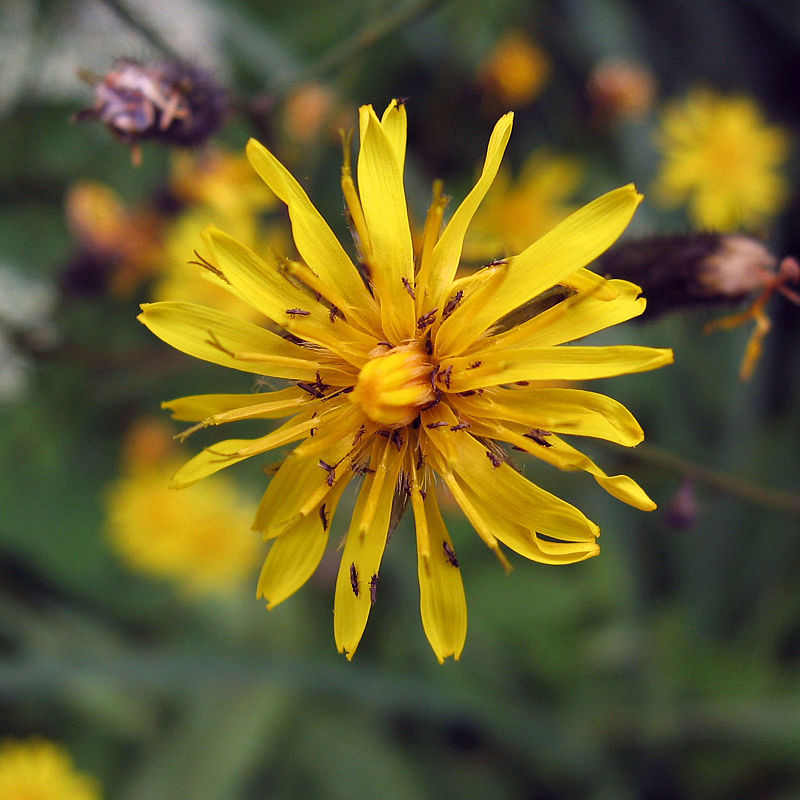Crepis tectorum
Crepis atribarba
annual hawksbeard, narrow leaf hawksbeard, rooftop hawksbeard
slender hawksbeard
Basal leaves petiolate, the blade lanceolate or oblanceolate, finely toothed to pinnately parted, up to 15 cm. long and 4 cm. wide; reduced cauline leaves sessile and auriculate, linear, often involute.
Basal and lower cauline leaves 1-3.5 dm. long, deeply pinnatifid, with narrow main axis and linear, entire segments; upper leaves becoming linear and entire.
Heads several to numerous, 30-70 flowered;
involucre 6-9 mm. high, its inner bracts 12-15, with fine hairs and sometimes with stalked glands as well, the outer bracts about one-third as long;
corollas all ligulate, yellow.
Heads 3-30(40) with 10-40 flowers;
corollas 10-18 mm long;
involucre 8-15 mm high, typically with gray tomentum and often with black setae that lack glands;
involucre rarely glabrous; outer involucral bracts less than half as long as the mostly 8-10 inner ones.
Achenes 2.5-4.5 mm. long, dark reddish-brown, spindle-shaped, with 10 ribs.
Achenes greenish, tapered to the tip.
Crepis tectorum
Crepis atribarba
- Local floras:
BC,
CA,
OR,
WA
- Local Web sites:
CalFlora,
CalPhotos,
Flora NW,
PNW Herbaria
WildflowerSearch
iNaturalist (observations)
USDA Plants Database
- LBJ Wildflower Center
- SEINet
- Plants of the World Online
- Encyclopedia of Life
- Wikipedia
- Google Image Search



